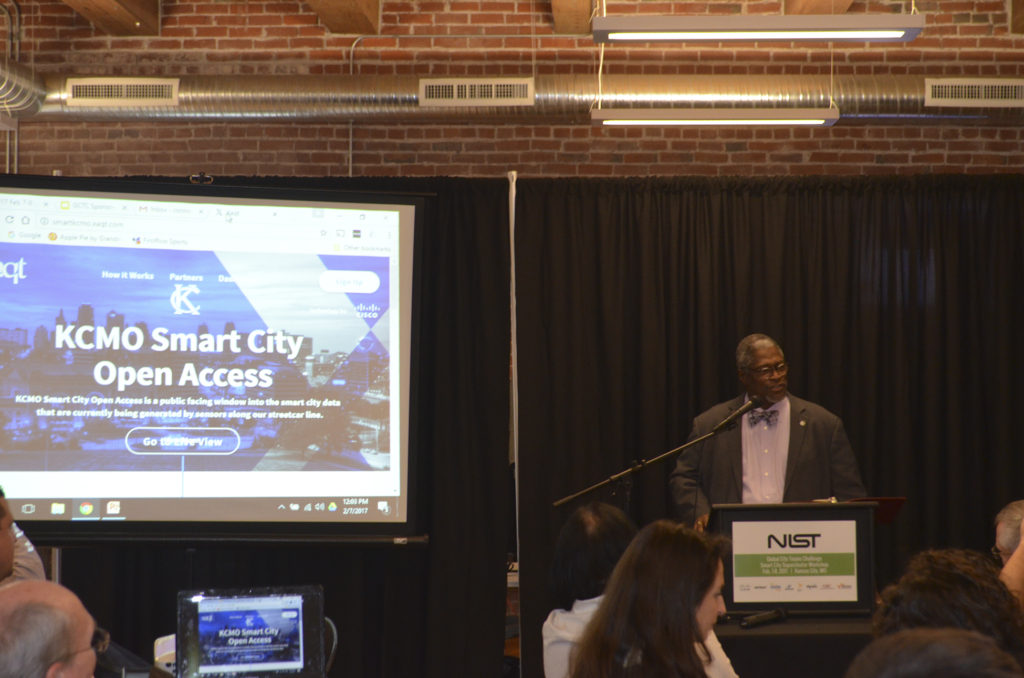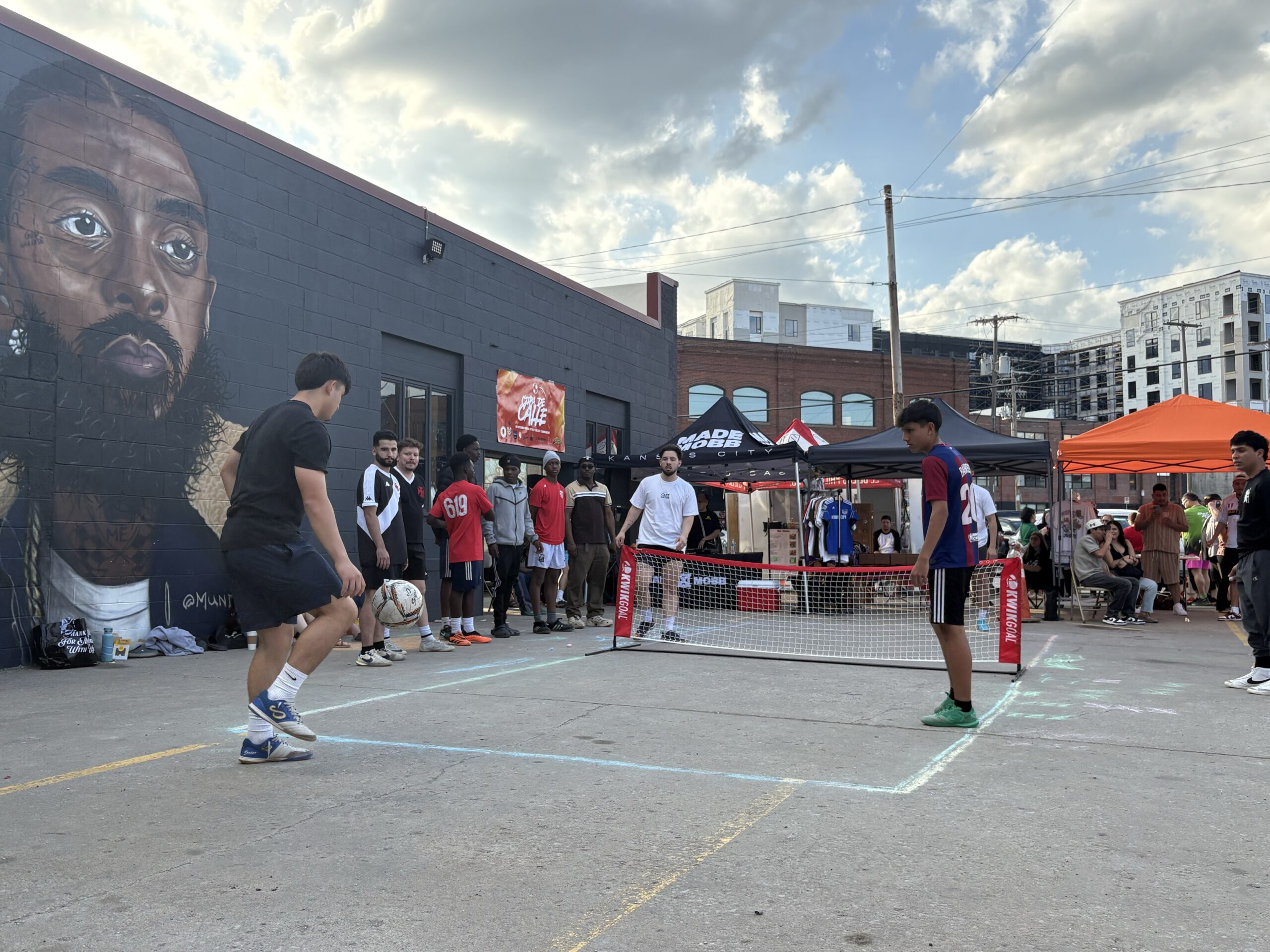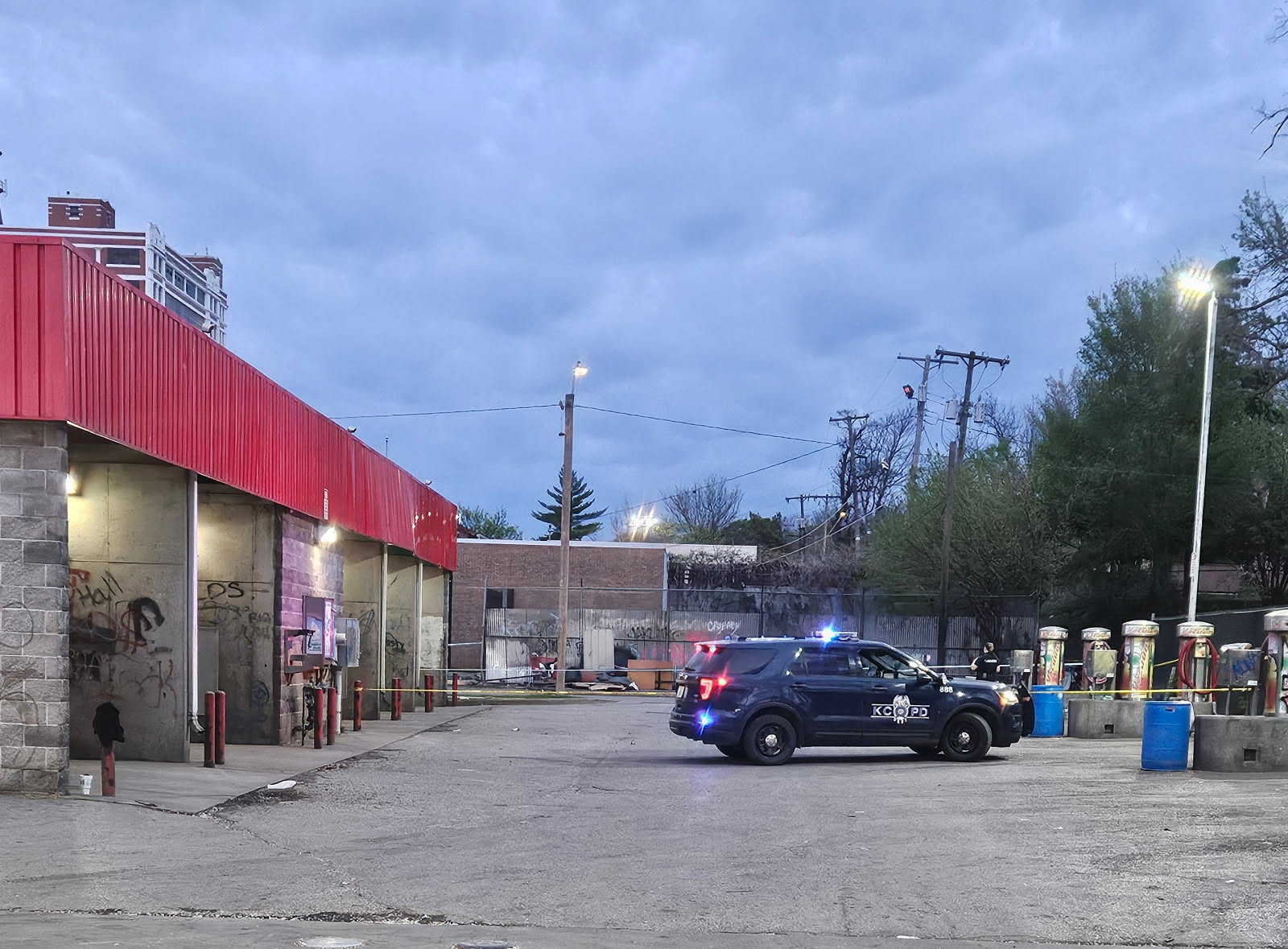Northeast News
February 8, 2017
KANSAS CITY, Missouri – A new digital platform unveiled this week as part of Kansas City’s Smart City initiative will make planning your day around the KC Streetcar line easier than ever.
Mayor Sly James appeared at a national workshop hosted by Think Big Partners (1712 Main) on Tuesday, February 7 to announce the digital publication of the sensor-compiled Smart City data on smartkcmo.xaqt.com/. The sensors gather up to 10 Gigabytes of raw data per day, which is then presented on the Xaqt web portal to provide the public with real time information surrounding the downtown streetcar line – including available parking spaces, the current location of each of the City’s three streetcars, traffic flow along the corridor over a 24-hour period, and current traffic conditions.
“The heat map, where you see the bright orange and red, that’s actually showing the rate of traffic flow,” said Chris Crosby, CEO of Xaqt.
The new website is part of Kansas City, Missouri’s Smart City initiative, kicked off nine months ago, which has also included the addition of free public Wi-Fi and the installation of 25 interactive kiosks downtown. The smart sensors which power the new website currently track the length of the 2.2 mile KC Streetcar route, bounding north at City Market and south at Union Station.
“It’s about 51 blocks of total Wi-Fi space right now, and the traffic censors are on Main,” said Bob Bennett, KCMO Chief Innovation Officer.
Bennett said that while the parking and traffic components were the first aspects of the rollout due to their utility to the public, they only represent the tip of the iceberg in terms of what the City can garner from its smart sensors. The web site is expected to eventually include details that could drive economic activity, such as pedestrian traffic along the Main Street corridor, the ability to study days and weeks worth of back data, and even a feature to ‘futurecast’ expected traffic conditions.
“Over time, I anticipate that there will be economic pieces that come off of this,” said Bennett. “With the foot traffic and vehicular traffic, we’ll be able to figure out where business opportunities are. I am looking for the next coffee shop guy to come up and look for where the optimal location is within Main Street. Based on the foot traffic, I can tell you where that is.”
Moving forward, Bennett added that the City would like to see Smart City sensors added to other parts of the city. Specifically, he mentioned installing sensors along any future expansion to the streetcar line and throughout the Northland neighborhood. The biggest priority, according to Bennett, is to include smart sensors along the Prospect corridor, where the new $54 million Prospect MAX line is expected to begin operation in 2020.
“The first of these was to do for Prospect Avenue what has been done here on Main Street, in terms of Wi-Fi access, in terms of digital kiosks, in terms of public safety infrastructure,” said Bennett.
The new website also helps the City of Kansas City, Missouri keep a pledge with taxpayers to ensure that all city data remains open to the public. Bennett noted the importance of that promise after the February 7 announcement.
“We signed an agreement with the citizens of Kansas City in October 2015 that all of our data would be open,” said Bennett. “We are not hiding anything. This is yet another manifestation of that.”
For his part, Crosby said that Kansas City has been a strong partner in building a technologically savvy municipality.
“Kansas City, when we look at it in comparison to other cities, they’re very forward thinking, and they’re very innovative,” said Crosby.

















